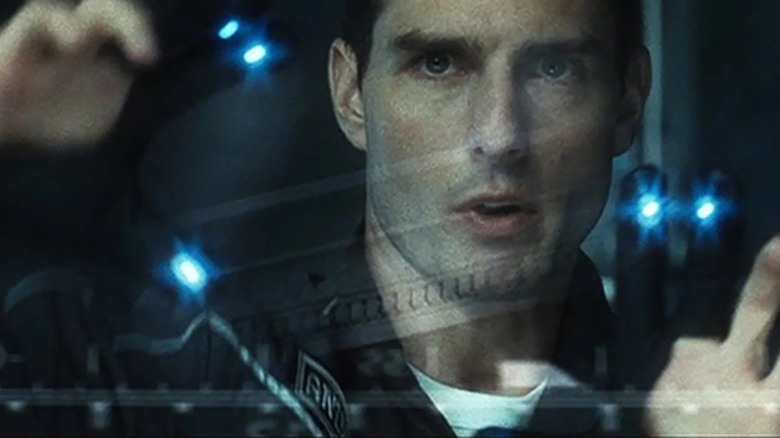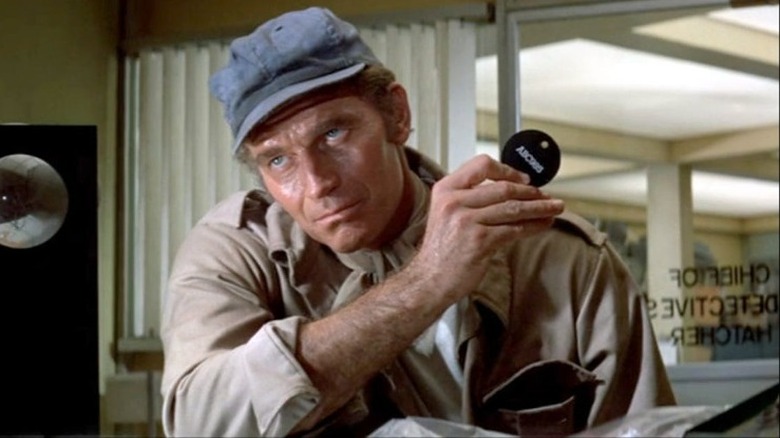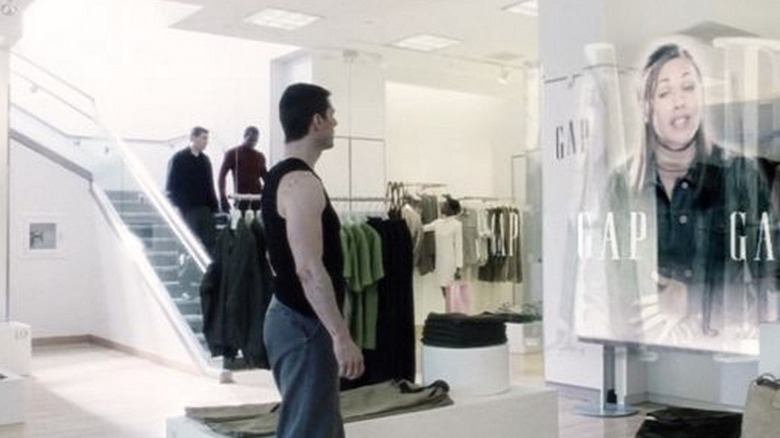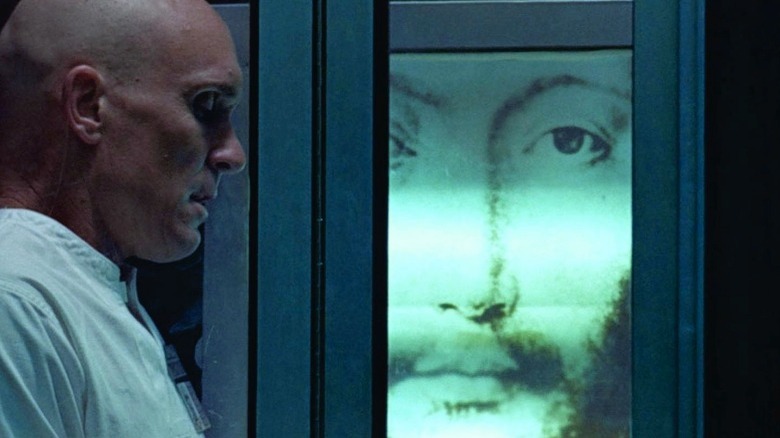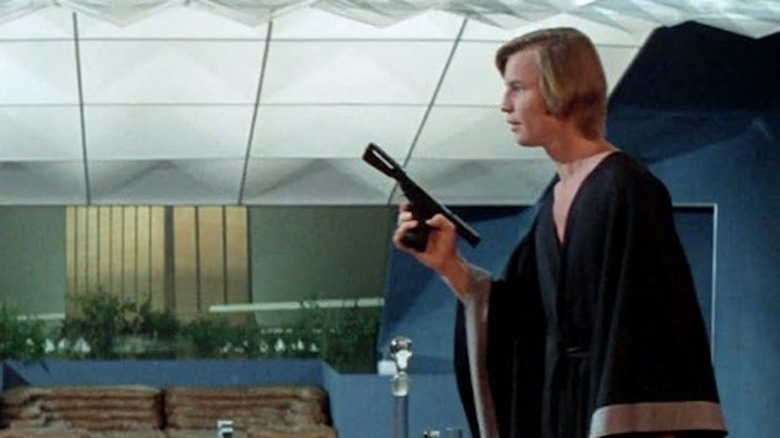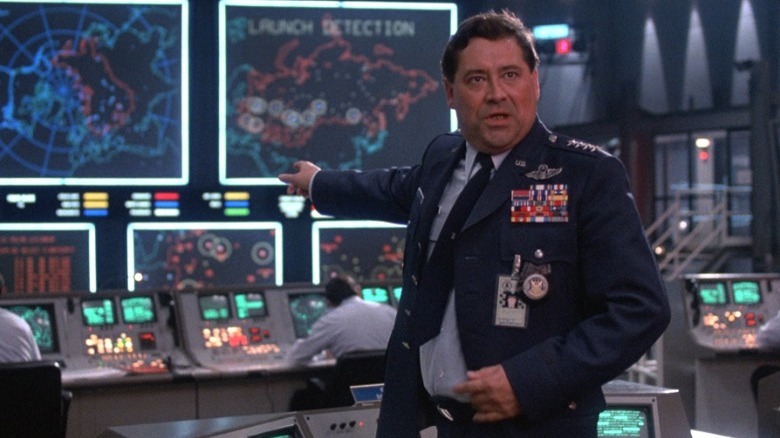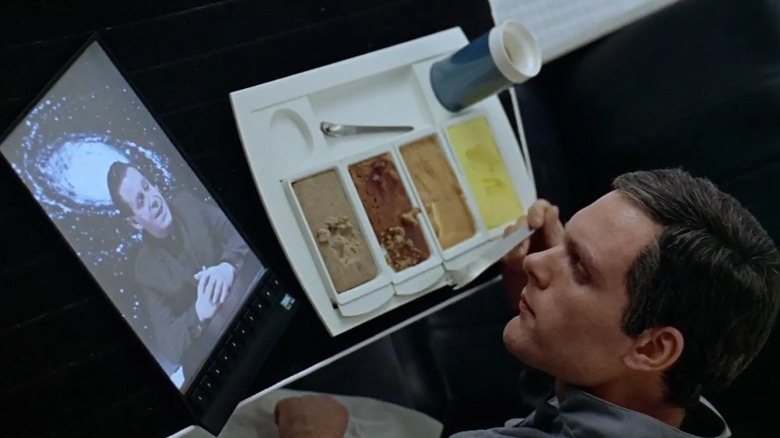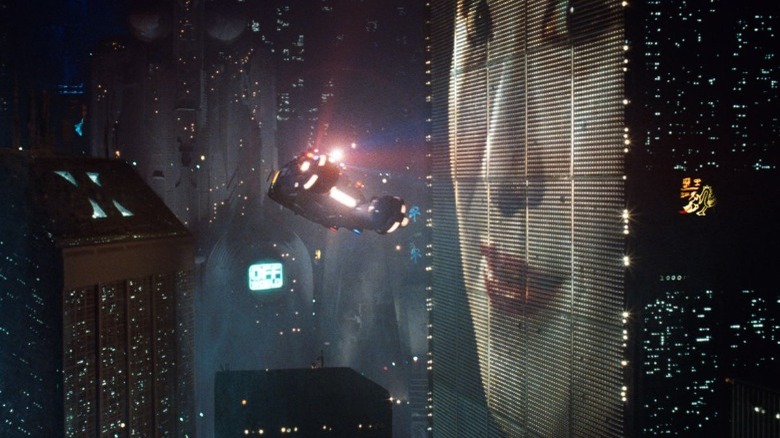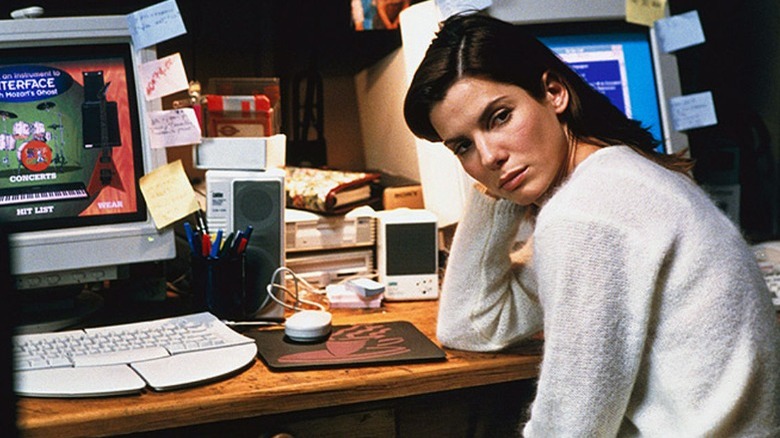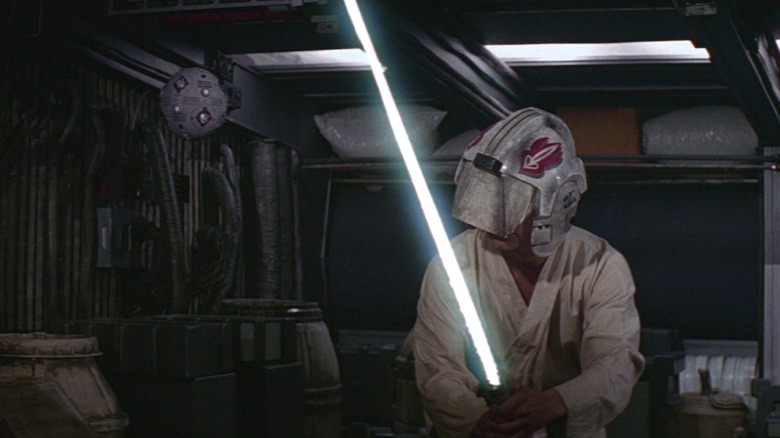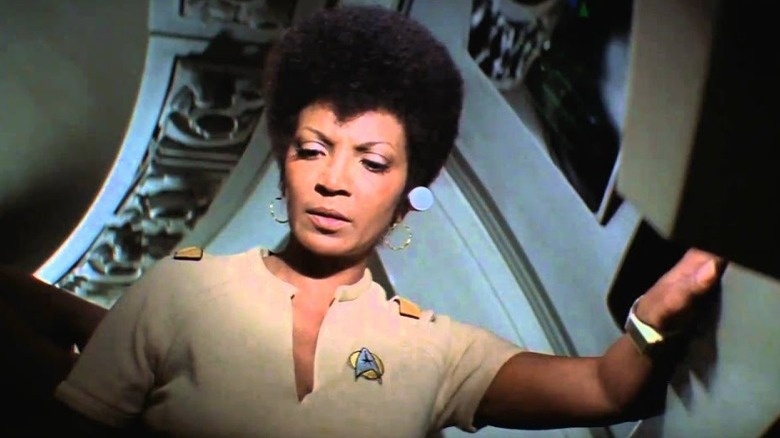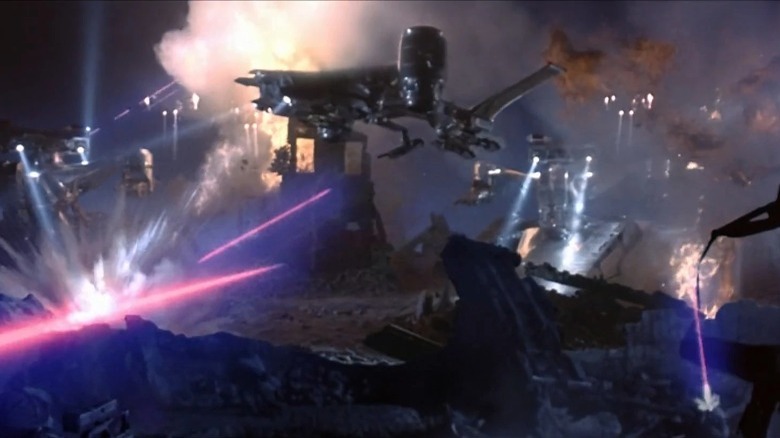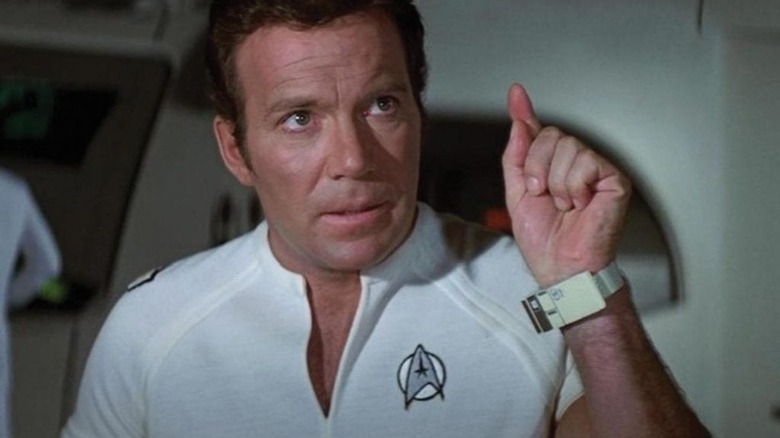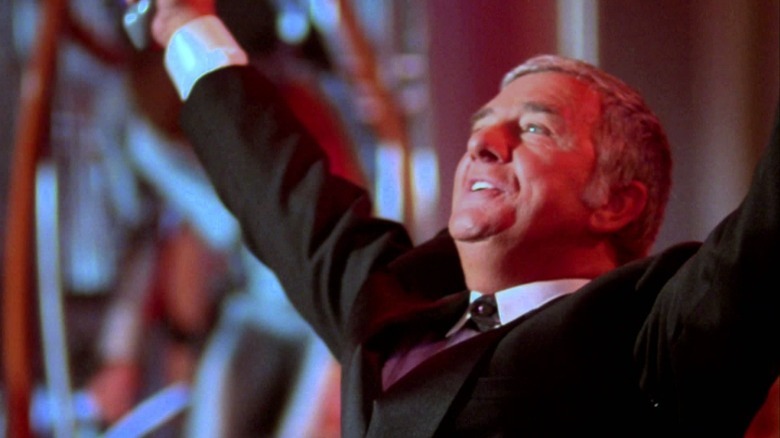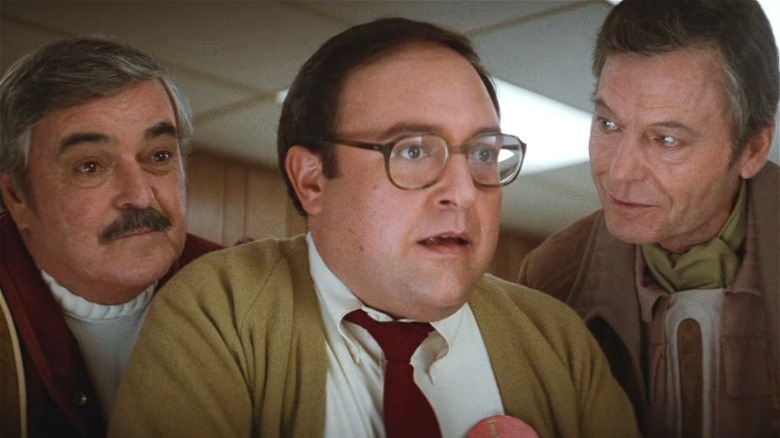Sci-Fi Movies That Accurately Predicted The Future
Part of the fun of the science fiction genre is the way that some stories try to see the future. Sci-fi novelists have been hitting close to home since H.G.Wells predicted wireless communication, or when Stanislaw Lem imagined today's e-readers. Our favorite movies sometimes have a window to the future, too. A story is rarely completely accurate of course. The details rarely line up exactly. Although, it's still funny that "I Am Legend" nailed the promotional logo "Batman Vs. Superman" would later use.
Sometimes, the movies get close to a clear glimpse of our future — uncomfortably close — especially in the case of older, more pessimistic films. These predictions have woven themselves into our current world so smoothly that we don't even realize how dystopian it all is. Fortunately, they're not all depressing, and some even bring humanity closer together. Let's explore some of these guesses and see just how close they came.
Soylent Green took on climate change and assisted death
"Soylent Green" is a Charlton Heston classic that hits amazingly hard for how hammy the lead performance sometimes is. Heston has never been anything other than full steam ahead, and to his credit, his bombastic emotions sell the biggest revelations in the movie. The most well-known, of course, is the ecological impact humanity has had on the world. We've created disaster by our thoughtless sprawl. Our oceans are dying, the crops have withered, and it's hot all the time. We're not eating each other — yet — but it's not exactly a comfort to know that a real Soylent product exists purposely because of the potential need to change how we eat.
Heston's other crowning moment is shared with Edward G. Robinson as Sol, who's discovered the oceanic situation and decides he can't live like this any longer. He chooses a peaceful death, knowing that his death will lead others to the truth of Soylent Green. It's a beautiful sequence, granted the dignity many wish they could be promised at the end of life. Switzerland's Dignitas group advocates for end-of-life care, and they've been supported by futurists and fantasists like Terry Pratchett.
If you or someone you know is struggling or in crisis, help is available. Call or text 988 or chat 988lifeline.org
Minority Report delivered personally targeted advertising
It's no secret anymore that our phones are tailoring advertising content to us unless we jump through a lot of hoops to keep them from doing it. Mostly, it's gathered through "benign" ways. We Google something or look up toilet roll covers on Amazon to keep the cat from destroying our TP, and suddenly Google Adsense acts like we're eccentrics that want to collect every crochet Barbie roll cover that's available on Etsy.
It's weird how so many of us have just accepted this as part of our lives today. It's not the fault of "Minority Report," even though its slick futuristic world showed how invasive and personal advertising had become. With a quick scan of the eye, ads in subways and shopping centers creep into view, hawking name-brand beers to a fleeing John Anderton (Tom Cruise) and making it easy for his pursuers to follow his trail. Thankfully, those big billboards along the freeways aren't here — yet.
THX 1138 offered zen peace on the cheap
"THX 1138" is George Lucas at his most darkly satirical. A loose collage of scenes intended to lance the boil of mindless consumerism and late-stage capitalism, it's a blank white world full of people that have been turned into machine cogs. Our protagonist, THX, works so he can buy stuff, literally, just random stuff that he throws away when he gets home, and his roommate has fiddled with his medication enough that he's started to realize this isn't quite right. Sometimes he turns to faith, but what he gets is a computer-automated chapel so neglected that a lizard is living in its wires.
That all sounds pretty harsh, a glimpse of a world we definitely don't want. Unfortunately, Amazon isn't just under fire for how it disregards worker health and safety. In 2021, the corporation was also blithely unaware of the implications of its (we're not kidding with this title), AmaZen initiative. It places Zenbooths in some warehouses and loads them up with mindfulness videos to help "recharge" workers. Holy dystopia, Batman!
Logan's Run and the integrated smart home
The "Internet of Things" is a phrase that can make the most hardened systems engineer shudder in terror. It sounds great in theory, and it looks awesome in science fiction movies. "Logan's Run" was the first to showcase a home that knew when its occupant came home and would manage the lights and other luxuries. Other flicks, like 1999's cheesy Disney movie "Smart House," predicted the idea of an assistant with a personality. Siri hasn't evolved that far yet, but they're certainly trying to get her there.
The reality of smart homes doesn't match the promise of fiction, but they're still evolving. IoT home networks are often riddled with compatibility issues and worse, security flaws. It's also not as predictive as Tony Stark's AI-assisted mansion, nor are most systems as intuitive as they should be. Smart homes are becoming more achievable by the day, but they're far from perfect, and they're not as common as "The Jetsons" predicted. Yet.
WarGames took combat to the computers
For decades, picturing a military war room involved a bunch of serious men in uniforms smoking cigars and staring at maps. "Dr. Strangelove" went a long way in constructing that mental image, but the truth is probably blander than that. However, technology has changed what war means, and those men are now wired with up-to-the-second computer analysis and satellite imagery so crisp that the real capabilities are classified — except for that time a U.S. president tweeted it out.
"WarGames" was on the cutting edge, making early hacking and phreaking techniques mainstream. But it's WOPR, the movie's advanced computer, that's the closest to today's reality. Today's war rooms are cutting-edge data centers used to calculate simulation models and a whole lot of other classified stuff. WOPR's tactical innocence is charming compared to what these new supercomputers can do. Yet, it still takes a human mind to catch the most dangerous mistakes programmed into these systems — just like Stanislav Petrov in 1983, who recognized that his computer was giving him a false alarm. Fortunately, he chose not to start World War III.
2001: A Space Odyssey helped give us digital tablets
An unusual legal slap fight in 2011 may have helped establish the timeline of the tablet computer. Today, iPads, Microsoft Surfaces, and Samsung Galaxy Tabs are fixtures of everyday life, with around 53 percent of Americans owning one. But in the 2010s, companies were fighting to gain market traction against Apple and avoid infringement lawsuits. Stanley Kubrick's masterpiece, "2001: A Space Odyssey" had to get involved.
The heart of the court battle hinged on whether Apple could claim they invented the concept of a computer tablet or if the idea of "prior art" applied. Since a tablet appears in "2001," and it looks similar to today's devices, Samsung argued that the computer tablet wasn't Apple's idea alone. The case took until 2018 to finally settle, and the results are still a little confusing. At any rate, the important thing is that Kubrick and writer Arthur C. Clarke imagined a tool so close to today's digital tablets that nobody, not even the courts, could ignore the futuristic impact "2001" had on today's tech.
Blade Runner's digital cityscape is today's reality
Today, the digital billboard is an increasingly present, vaguely annoying part of our existence. Its rise is framed by marketing materials with some of the most clinical, dystopian language you could ever read. Terms like "digital out-of-home advertising" are flung around like an uninvited Jared Leto wearing a cape at a beach party. They haven't totally replaced the old billboards with their hokey car dealership wraps yet, but this multi-billion dollar industry is working on it.
Visiting Times Square or the streets of Tokyo at night feels like you're walking into a scene from "Blade Runner." There's a good reason for that. Ridley Scott's sci-fi masterpiece was the first to paint the city skylines with electronic light. Now, its giant Coke billboard and the glimpse of a smiling woman the size of Godzilla are almost quaint next to today's OLED displays that can make Darth Vader glare down at passing crowds. It's definitely cool to look at, but it's still annoying.
The Net caught us up to online security risks
Released three years before the equally paranoid (and better) "Enemy of the State," 1995's "The Net" with Sandra Bullock is a messy take on cybersecurity. Unfortunately, it also rang some fairly accurate warning bells about how easy it is to have your life destroyed with a few clicks of a mouse.
"The Net" is garbage in how it portrays the fledgling Internet, and its description of online backdoors is overdone. Nonetheless, Angela Bennett's (Bullock) whole life is already accessible via the web, and it's easy for the film's terrorist hacker clique to get at her information, including her social security number, and erase her bank accounts. Today, that kind of attack is almost commonplace. Cybercrime's undergone a meteoric rise on pace with the popularity of the 'net itself, and we're losing billions of dollars — and our identities — every year. Fortunately, fixing an attack is a little easier now than when Sandra Bullock's character went through it.
Star Wars and The Terminator brought home the drones
Toy drones can be a ton of fun, especially if you have a cat. These wireless bits of technology have their roots in late 19th-century aeronautics, with incendiary balloons taking center stage in Operation Outward in World War II. These early drones took a long time to reach their science fiction potential, with the movies showing off what they could do first.
"The Terminator" made unmanned aircraft into something to be scared of. A flashforward into the post-Skynet future shows off the HK-Aerial, an unmanned VTOL programmed to wipe out humanity. "Star Wars" snuck in a gentler kind of futuristic drone in 1977 — well before James Cameron gave us nightmares. "Star Wars" has Jedi training drones and mouse droids, both of which are smart enough to do their jobs but probably not capable of passing the Turing test. Today's drones, the ones that aren't toys, are frighteningly effective. From delivery drones to merciless war machines, they are part of today's landscape — for better, and often, for worse.
Star Trek brings universal translation to life
The idea of a universal translator has been a feature of science fiction novels for decades, and it was often a major plot device in both the original "Star Trek" series and Douglas Adams' "Hitchhiker's Guide to the Galaxy" saga. But the race to put a translator on film first was won by "Star Trek: The Motion Picture" in 1979. Still, all these incarnations come pretty close to what we've got today.
There will always be a need for human linguists to help us understand each other, but technology has stepped up to assist. Back in 1997, the early days of the public internet, AltaVista (now part of Yahoo) launched a web tool called Babel Fish. Named for Douglas Adams' squirmy little helper, the site let users punch in words from their language and get a rough translation back almost instantly. Today, Google Assistant can translate a live conversation in near real-time, so long as you have a compatible product like Google Home or your cellphone at hand.
Terminator came up with AI-enhanced tanks before the US military did
Drones still rely on a human operator most of the time. To get a truly hands-off experience, artificial intelligence has to step in. In "The Terminator," we get a good glimpse at what happens when Skynet starts taking its orders and its own safety a lot more seriously than its human makers had in mind. So it's a good thing we've learned from this fictional mistake, right? Right?
In 2019, news broke that the U.S. Army was working on the ATLAS program. The Advanced Targeting and Lethality Automated System (which sounds so homey and comforting) is potentially the first step towards a real-life Terminator tank. After the public release, the Defense Department quickly noticed that people were reasonably freaking out about AI murder robots and tried to refocus the conversation onto less-lethal possibilities for the tech. Predictably, this cutting-edge program went dark. Did it get mothballed? Probably not, since Milrem Robotics recently premiered a Type-X semi-autonomous tank of its own, complete with an ominous live-fire exercise. Start training your robot-sniffing dogs, kids.
Star Trek modeled the smart watch, and Doc Brown made them cooler
When "Star Trek" premiered in the '60s, it introduced handheld communicators that looked like fancy walkie-talkies. When the franchise moved to the "Next Generation," they were replaced by nifty com badges worn high on the chest as an official insignia, but for their first movie, Kirk and the gang went for a more stylish method of communication. They wore the first smartwatches.
These gadgets were largely limited to verbal communication. It wasn't until "Back to the Future II" that Doc Brown showed off his upgraded toy: a watch with an app that predicted (down to the second) what the weather could do. Today's popular smartwatches can do that and much more, with Fitbits, Galaxy Watches, and the ubiquitous Apple Watch all clamoring to be our fashionable way to do most of what we do on our phones. That said, those weather apps still aren't perfectly on target with their predictions, but that's not their fault.
The Running Man predicted brutal reality game shows
Under the pen name "Richard Bachman," Stephen King let his darker side out to play. One of the grim stories he published under that name was "The Running Man," a dystopian sci-fi novella in which ecological disaster and extreme poverty drive people to risk their lives on game shows for money. The film adaptation, which stars Arnold Schwarzenegger, softens the premise — but only a little. In the movie, these reality murder games are a method of execution aired live to entertain the people living in a world of extreme poverty.
"American Gladiators" premiered in 1989, two years after the film was released. According to the NY Post, one of the producers later admitted to Steven de Souza, screenwriter for "The Running Man," that the reality TV competition show was pitched using clips from the movie, but without the murder. That's the sort of thing "Black Mirror" warned us about. Meanwhile, reality TV game shows like "Survivor" continue to thrive, and now, Netflix even produced a "Squid Game" reality show, based on the hit Korean series in which nearly everyone has to die in a monstrous battle royale. The irony is the first challenge our contestants must survive.
Star Trek's chief engineer gave us transparent aluminum
"Star Trek IV: The Voyage Home" is the most fun flick in the franchise. Kirk and his crew have to slingshot backward through time to 1980s Earth to retrieve a pair of humpback whales and save the future. It's up to Dr. McCoy and Chief Engineer Scott to figure out how to turn the cargo hold into a giant fish tank. Not much on Earth can take the stress required, so Scotty waltzes into a manufacturing plant and trades the recipe for transparent aluminum for the thick plexiglass they'll need.
Transparent aluminum was a sci-fi dream in the movie, an eye-catcher for the fictional engineer running the plant. But research was already in progress on something almost exactly like it. Aluminum oxynitride is a ceramic polymer, which may not sound sexy or metallic, but it does exactly what Scotty predicted. ALON is crystal clear and extremely hard, capable of withstanding impact from high-caliber bullets. It's commercially available through Surmet and used by the military for infrared domes and as a translucent blast armor. In a pinch, you could probably make a really cool aquarium with it.
